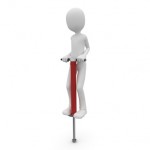 At the risk of contradicting weight room dogma, I’m going to boldly assert that not a single muscle is there to make us look better at the beach. While that may be the motivation to exercise for a lot of people, cosmetic workouts don’t, on their own, get you very far functionally and can even be detrimental by creating muscle imbalances. The good news is that vanity and function are not mutually exclusive — you can hit both birds with one stone if you just play it smart. Of course, a crucial element of improving your muscles’ performance is knowing what muscles actually do. Mechanically speaking, muscles have three very specific functions. They:
At the risk of contradicting weight room dogma, I’m going to boldly assert that not a single muscle is there to make us look better at the beach. While that may be the motivation to exercise for a lot of people, cosmetic workouts don’t, on their own, get you very far functionally and can even be detrimental by creating muscle imbalances. The good news is that vanity and function are not mutually exclusive — you can hit both birds with one stone if you just play it smart. Of course, a crucial element of improving your muscles’ performance is knowing what muscles actually do. Mechanically speaking, muscles have three very specific functions. They:
- Stabilize joints: Strong muscles create a sturdy, supportive girdle around joints, serving as their first line of defense against injury. The next line of defense would be the ligaments–tough bands of fibrous tissue that hold the bones together (e.g. MCL, ACL in the knee). The stronger the muscles, the less wear and tear on the joint and the less stressed the ligaments. Their stabilizing role is one reason that strengthening muscles above, below and around arthritic joints is especially important.
- Shock-absorb for joints: Strong and flexible muscles help dampen the forces that ultimately get transmitted to joints. Imagine using a pogo stick without the spring–that’d be one seriously unpleasant toy. Well your joints need muscles to provide a little “spring” too in order to decrease jarring impacts. Greater impact= greater stress= greater need for shock absorption. So while this concept applies to simple walking, it is magnified in running wherein the joint forces are exponentially larger. And it even applies to arm joints, which likewise are subjected to significant forces when you strike a ball with a baseball bat or a tennis racquet for instance. Wherever they are, muscles can help protect joints from excessive stresses if kept adequately flexible and strong.
- Move joints: This is the obvious function of muscles, and it has a corollary– joints are there to be moved. Muscles and joints (and ligaments for that matter…) need to move. That’s, in part, how they get nourished. It’s also why prolonged rest is no longer recommended for most routine strains, back pain, etc. Like a car that’s allowed to sit idle for too long, muscles, tendons, ligaments, and joints “get rusty” with disuse. And the longer they’ve been in disuse, the harder it is to get them back working properly. So try not to focus on the same few, cosmetically pleasing muscles each time. Instead, make a point to engage as many joints as possible as often as possible and as fully as possible.
So by all means, lift weights. Lift lots of weights. But don’t lose sight of what your muscles are there for in the first place– you’ll be more purposeful with your exercises and improve your functional health. You’re already making the effort, you might as well make it count. After all, you can slather oil all over your car and probably make it shine like the top of the Empire State Building, but as long as you’ve got the can out, you should probably put some in the engine so the car will actually run better….
